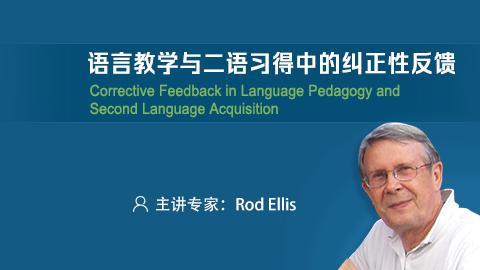Corrective feedback takes the form of responses to learners utterances that contain an error.
老师对学生错误的反馈
Cognitive-interactionist framework
should learners errors be corrected?
skill-learning approach: learners need feedback
1. immediately in accuracy activity
2. delayed in fluency work
decide which errors to correct
1. errors vs. mistakes(corder,1967)
2. global vs. local errors(Burt, 1975)
3. Errors involving simple vs. complex features(Krashen, 1982)
the importance of "encouraging, tactful correction)
who should do the correcting? 3 possibilities:
1. teacher
2. student
3. another student
as far as possbile, it is the student who should do the correction not the teacher.
2 functions of CF:
1. by providing learners with positive evidence of target language forms
Long(2006)-recasts are more effective
2. by pushing learners to self-correct their errors(i.e. through output)
Lyster(2004)-self-correct is more effective
explicit feedback-an example
1. What is corrective feedback?
(1)It takes the form of responses to learner utterances that contain an error.
trigger → feedback → uptake
(2)it is an interface issue:
∵ important to teachers (pedagogy)
并 important in SLA research
2. Corrective feedback in pedagogy (pedagogical positions)
以前的观点认为
(1)teacher should provide positive feedback
(2)delay correction for the sake of fluency
(3)be selective in the errors while no pratical strategies are provided about how to be selective
(4)students should do the correction not the teacher
点评:这些建议都是依据experiences建立起来的,no reference to any research on corrective feedback.
3. Corrective feedback in SLA:
(What researchers have found?)
(1) theoretical positions:
A. cognitive-interactionist accounts
两个注重点:
注重当学生有交流需要的时候提供CF;
注重学生需要知道老师在纠正他们
两个functions:
提供正确地语言形式;
促使学习者自己纠正
controversy:
recast or prompts? 可以combining prompts and recast
implicit or explicit? 学者更多认同后者
types:见Lyster, Satio & Sato, 2013:3
B. socialcultural theory
注重:
more colloborative;
enable the joint construction oif a Zone of Proximal Development;
needs to be "graduated"
a regulatory scale: based on a continuum of corrective strategies employed by a tutor
(2) Research
A. Does CF assist L2 acquisition?
B. Which type is most effective
很大程度上取决于环境
C. Does learner self-correction following CF contribute to L2 acquisition?
认为learners benefit from CF even if they do not repair their errors but when they do, deeper processing may occur, which may assit learning
4. 主讲人的观点
(1) Should learners' errors be corrected?
CF works and works well in accuracy and fluency-based activities
(2) When to correct?
没有证据证明immediate or delayed CF is more effective
(3) Which erros should be corrected?
没有证据证明focused approached 是否更有效
(4)How should errors be corrected?
no theoretical justification for the choice of strategy in the teacher guides
Some general guidelines for conducting CF:
intensiveness;
no reliance mainly on recasts;
how to correct according to context
combination of input-providing and output-prompting CF
encouage uptake with repair
(5)Who shoud do the correcting?
teacher-correction is needed but leave time for the uptake
peer-correction rarely occurs
5. Final commnent
(1)correcting is necessary for helping L2 acquisition but do it sensitively
(2)needed in both accuracy and fluency work
***Does the effectiveness of CF differ when teaching students of different language proficiency? If yes, how?
***Research methods to do CF research:
(1)descriptive research: observe and note down (如what tyoes of corrective feedback teacher use)
(2)experiemental research: 观察影响因素


